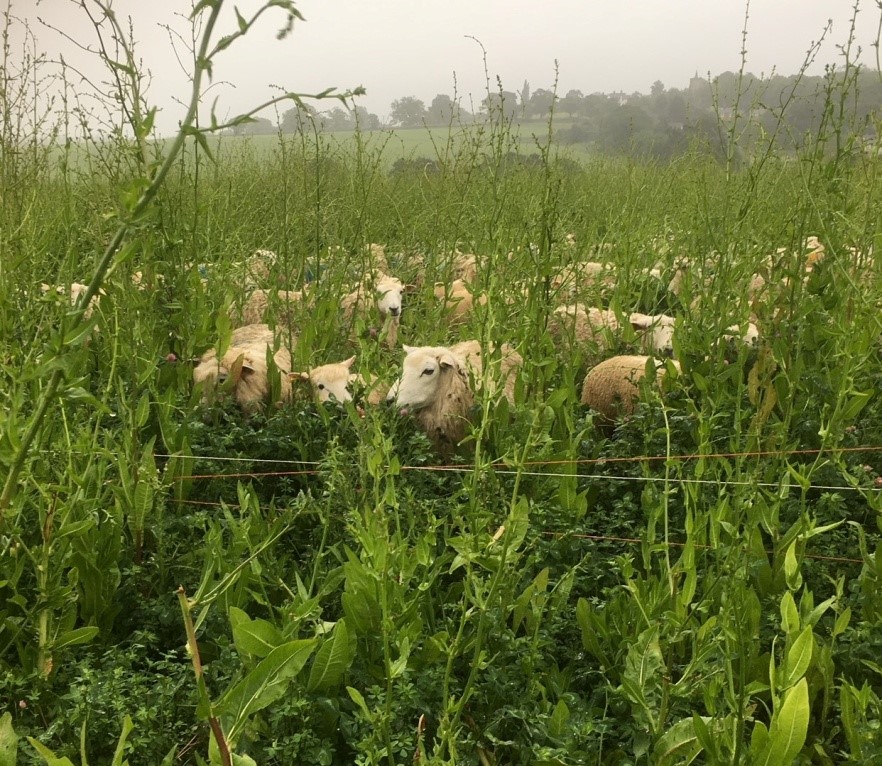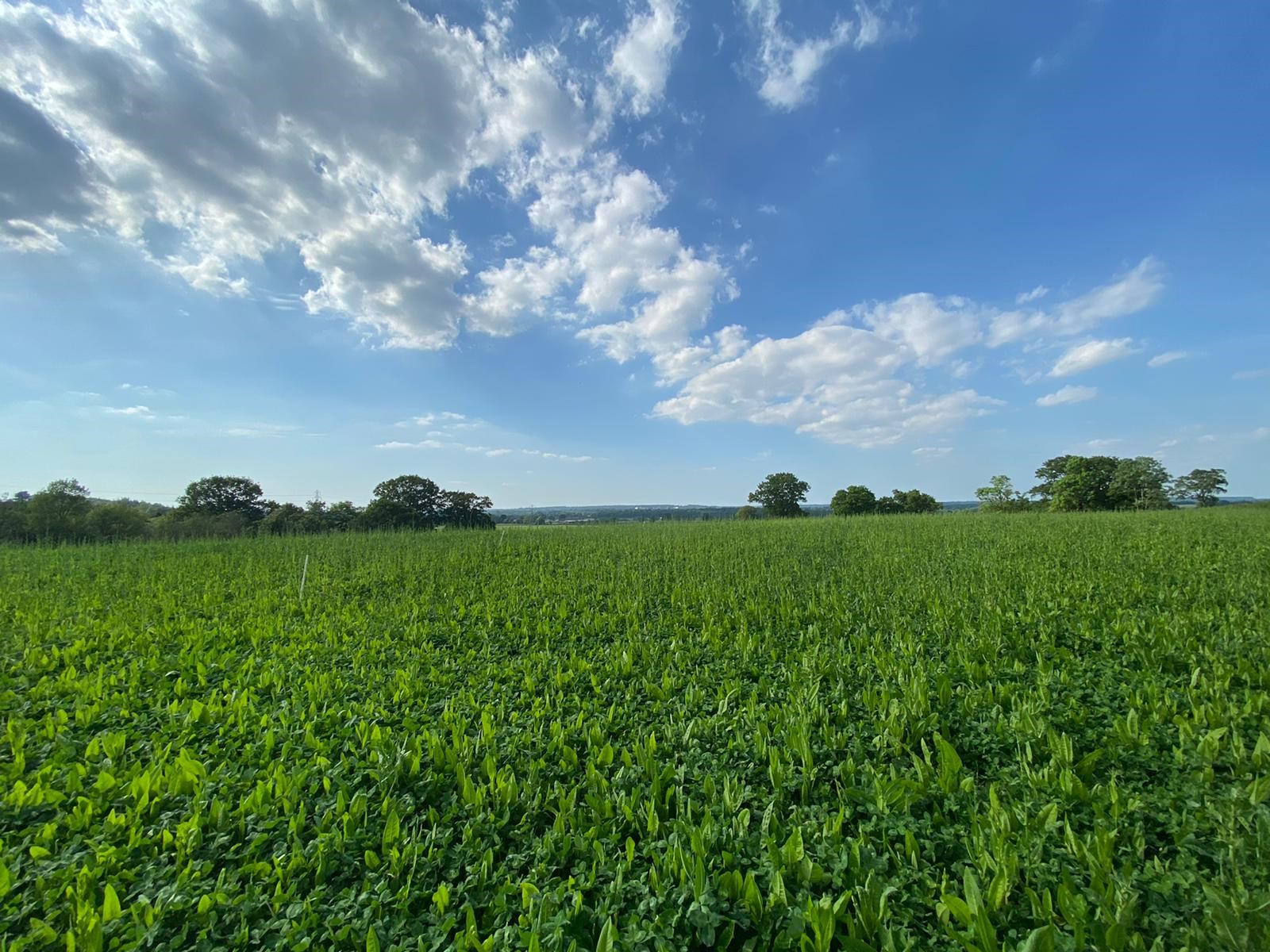- Home
- Knowledge library
- Legumes and chicory used in arable rotation to help beat blackgrass
Legumes and chicory used in arable rotation to help beat blackgrass
Last autumn, Angus Mackay introduced 40 ha of a lucerne, chicory and red clover ley to the farm to improve the resilience of the soils and improve profitability. Angus is a partner at Symondshyde farm, predominantly an arable enterprise with 1300 ewes.
Since introducing the ley last autumn, there have been some setbacks:
- Exceptionally wet winter meant that 8 ha of the ley failed
- Expensive establishment costs of £160–£190/ha when using as a 2–3-year ley – aiming to balance this out with good lamb growth rates
- Establishing the ley on arable land has meant there is no infrastructure, especially water and fencing
However, Angus has also noticed many benefits from introducing the leys, “The sheep preferentially graze out the heads of blackgrass, which is really useful for blackgrass control”. He adds, “We are also achieving growth rates of 350 g/day stocked at 56 lambs/ha, which makes this two-year ley cost-effective for our system. We are aiming for a FCR (feed conversion ratio) of 3.4:1, which should be achievable due to the high quality and digestibility of the feed.”
The sheep are managed within a grass-based system, and although the ley does not provide any winter grazing and is slow to start growing in spring, Angus has found advantages of this ley over grass swards:
- Better break for the arable than grass, and no problems with resistant ryegrass or wireworm issues
- Legumes useful for building fertility
- Herbal leys build forage stocks in the field without losing palatability and digestibility
- Mixes of species has worked well for ease of managing different blocks
Angus manages the leys by grazing from May to September, allowing the plant to flower and build up root reserves to get them through the winter.
Learn more about growing and feeding lucerne



